Designed Synthesis of Nanostructured Magnetic Hydroxyapatite Based Drug Nanocarrier for Anti-Cancer Drug Delivery toward the Treatment of Human Epidermoid Carcinoma
Abstract
:1. Introduction
2. Experiments
2.1. Materials
2.2. Synthesis of Fe3O4 Nanoparticles
2.3. Synthesis of Fe3O4/HAp Nanocomposites
2.4. Characterization
2.5. In Vitro Cytotoxicity Studies
2.5.1. Cell Culture Reagents
2.5.2. Cell Culture
2.5.3. Biological Assays-Antiproliferation and Cytotoxicity Assays against Human Cancer Cell Lines
Andrographolide (AG) Loading on Fe3O4/HAp NCs
Antiproliferative Activity Assay
Optical Microscopic Study to Detect Morphological Changes in A431 Cells
Neutral Red Cytotoxicity Assay
Assessment of Reactive Oxygen Species by DCFH-DA
Annexin V-FITC Apoptosis Assay
3. Results and Discussion
3.1. Physico-Chemical Properties Analysis
3.2. Biophysical Properties
3.2.1. In Vitro Cytotoxic Effect of Fe3O4/HAp Nanocomposites
3.2.2. Cytotoxic Effect of Andrographolide
3.2.3. Optical Microscopy Study
3.2.4. Cytotoxicity Effect of Fe3O4/HAp NCs on Normal Human Epidermal Keratinocyte HaCaT Cells
3.2.5. Neutral Red Cytotoxicity Assay
3.2.6. Measurement of ROS Production
3.2.7. Detection of Apoptosis Using Annexin-V-FITC and PI Dual Staining
4. Conclusions
Acknowledgments
Author Contributions
Conflicts of Interest
References
- Lu, A.H.; Salabas, E.L.; Schuth, F. Magnetic nanoparticles: Synthesis, protection, functionalization and application. Angew. Chem. Int. Ed. 2007, 46, 1222–1244. [Google Scholar] [CrossRef] [PubMed]
- Tai, Y.; Wang, L.; Fan, G.; Gao, J.-M.; Yu, H.; Zhang, L. Recent research progress on the preparation and application of magnetic nanospheres. Polym. Int. 2011, 60, 976–994. [Google Scholar] [CrossRef]
- Li, Z.; Yi, P.W.; Sun, Q.; Lei, H.; Zhao, H.L.; Zhu, Z.H.; Smith, S.C.; Lan, M.B.; Lu, G.Q.M. Ultrasmall water-soluble and biocompatible magnetic iron oxide nanoparticles as positive and negative dual contrast agents. Adv. Funct. Mater. 2012, 22, 2387–2393. [Google Scholar] [CrossRef]
- Ghosh, R.; Pradhan, L.; Devi, Y.P.; Meena, S.S.; Tewari, R.; Kumar, A.; Sharma, S.; Gajbhiye, N.S.; Vatsa, R.K.; Pandey, B.N.; et al. Induction heating studies of Fe3O4 magnetic nanoparticles capped with oleic acid and polyethylene glycol for hyperthermia. J. Mater. Chem. 2011, 21, 13388–13398. [Google Scholar] [CrossRef]
- Bharath, G.; Madhu, R.; Chen, S.M.; Veeramani, V.; Mangalaraj, D.; Ponpandian, N. Solvent-free mechanochemical synthesis of graphene oxide and Fe3O4–reduced graphene oxide nanocomposites for sensitive detection of nitrite. J. Mater. Chem. A 2015, 3, 15529–15539. [Google Scholar] [CrossRef]
- Majeed, M.I.; Lu, Q.; Yan, W.; Li, Z.; Hussain, I.; Tahir, M.N.; Tremel, W.; Tan, B. Highly water-soluble magnetic iron oxide (Fe3O4) nanoparticles for drug delivery: Enhanced in vitro therapeutic efficacy of doxorubicin and MION conjugates. J. Mater. Chem. B 2013, 1, 2874–2884. [Google Scholar] [CrossRef]
- Chen, L.; Wu, L.; Liu, F.; Qi, X.; Ge, Y.; Shen, S. Azo-functionalized Fe3O4 nanoparticles: A near-infrared light triggered drug delivery system for combined therapy of cancer with low toxicity. J. Mater. Chem. B 2016, 4, 3660–3669. [Google Scholar] [CrossRef]
- Bharath, G.; Prabhu, D.; Mangalaraj, D.; Viswanathan, C.; Ponpandian, N. Facile in situ growth of Fe3O4 nanoparticles on hydroxyapatite nanorods for pH dependent adsorption and controlled release of proteins. RSC Adv. 2014, 4, 50510–50520. [Google Scholar] [CrossRef]
- Chen, C.; Huang, Z.; Yuan, W.; Li, J.; Cheng, X.; Chi, R. Pressure effecting on morphology of hydroxyapatite crystals in homogeneous system. CrystEngComm 2011, 13, 1632–1637. [Google Scholar] [CrossRef]
- Bharath, G.; Jagadeesh, A.; Kumar, K.; Karthick, D.; Mangalaraj, D.; Viswanathan, C.; Ponpandian, N. Shape evolution and size controlled synthesis of mesoporous hydroxyapatite nanostructures and their morphology dependent Pb(II) removal from waste water. RSC Adv. 2014, 4, 37446–37457. [Google Scholar] [CrossRef]
- Ma, Q.Y.; Tralna, S.J.; Ryan, J.A.; Logan, T.J. In Situ Lead Immobilization by Apatite Environ. Sci. Technol. 1993, 27, 1803–1810. [Google Scholar] [CrossRef]
- Bharath, G.; Swarna Latha, B.; Alsharaeh, E.H.; Prakash, P.; Ponpandian, N. Enhanced hydroxyapatite nanorods formation on graphene oxide nanocomposite as a potential candidate for protein adsorption, pH controlled release and an effective drug delivery platform for cancer therapy. Anal. Methods 2017, 9, 240–252. [Google Scholar] [CrossRef]
- Shan, Z.; Li, X.; Gao, Y.; Wanga, X.; Li, C.; Wu, Q. Application of magnetic hydroxyapatite nanoparticles for solid phase extraction of plasmid DNA. Anal. Biochem. 2012, 425, 125–127. [Google Scholar] [CrossRef] [PubMed]
- Gu, L.; He, X.; Wu, Z. Mesoporous Fe3O4/hydroxyapatite composite for targeted drug delivery. Mater. Res. Bull. 2014, 59, 65–68. [Google Scholar] [CrossRef]
- Hou, C.H.; Hou, S.M.; Hsueh, Y.S.; Lin, J.; Wu, H.C.; Lin, F.H. The in vivo performance of biomagnetic hydroxyapatite nanoparticles in cancer hyperthermia therapy. Biomaterials 2009, 30, 3956–3960. [Google Scholar] [CrossRef] [PubMed]
- Sinha, J.; Mukhopadhyay, S.; Das, N.; Basu, M.K. Targeting of liposomal andrographolide to L. donovani-infected macrophages in vivo. Drug Deliv. 2000, 7, 209–213. [Google Scholar] [PubMed]
- Niranjan, A.; Tewari, S.K.; Lehri, A. Biological activities of Kalmegh (Andrographis paniculata Nees) and its active principles—A review. Ind. J. Nat. Prod. Resour. 2010, 1, 125–135. [Google Scholar]
- Misra, P.; Pal, N.L.; Guru, P.Y.; Katiyar, J.C.; Srivastava, V. Antimalarial Activity of Andrographis paniculata (Kalmegh) against Plasmodium berghei NK 65 in Mastomys natalensis. Pharm. Biol. 1992, 30, 263–274. [Google Scholar] [CrossRef]
- Zhu, S.P.; Kang, B.A. Distribution and excretion of [35S] NaHSO3–andrographolide by autoradiography. Acta Pharmacol. Sin. 1981, 2, 266–269. [Google Scholar]
- Partha, R.; Suvadra, D.; Tanmoy, B.; Subhasis, M.; Arup, M. Andrographolide nanoparticles in leishmaniasis: Characterization and in vitro evaluations. Int. J. Nanomed. 2010, 5, 1113–1121. [Google Scholar]
- Bharath, G.; Rajesh, M.; Shen-Ming, C.; Vediyappan, V.; Balamurugan, A.; Mangalaraj, D.; Viswanathan, C.; Ponpandian, N. Enzymatic electrochemical glucose biosensors by mesoporous 1D hydroxyapatite-on-2D reduced graphene oxide. J. Mater. Chem. B 2015, 3, 1360–1370. [Google Scholar] [CrossRef]
- Kumar, S.R.; Paulpandi, M.; ManivelRaja, M.; Mangalaraj, D.; Viswanathan, C.; Kannan, S.; Ponpandian, N. An in vitro analysis of H1N1 viral inhibition using polymer coated superparamagnetic Fe3O4 nanoparticles. RSC Adv. 2014, 4, 13409–13418. [Google Scholar] [CrossRef]
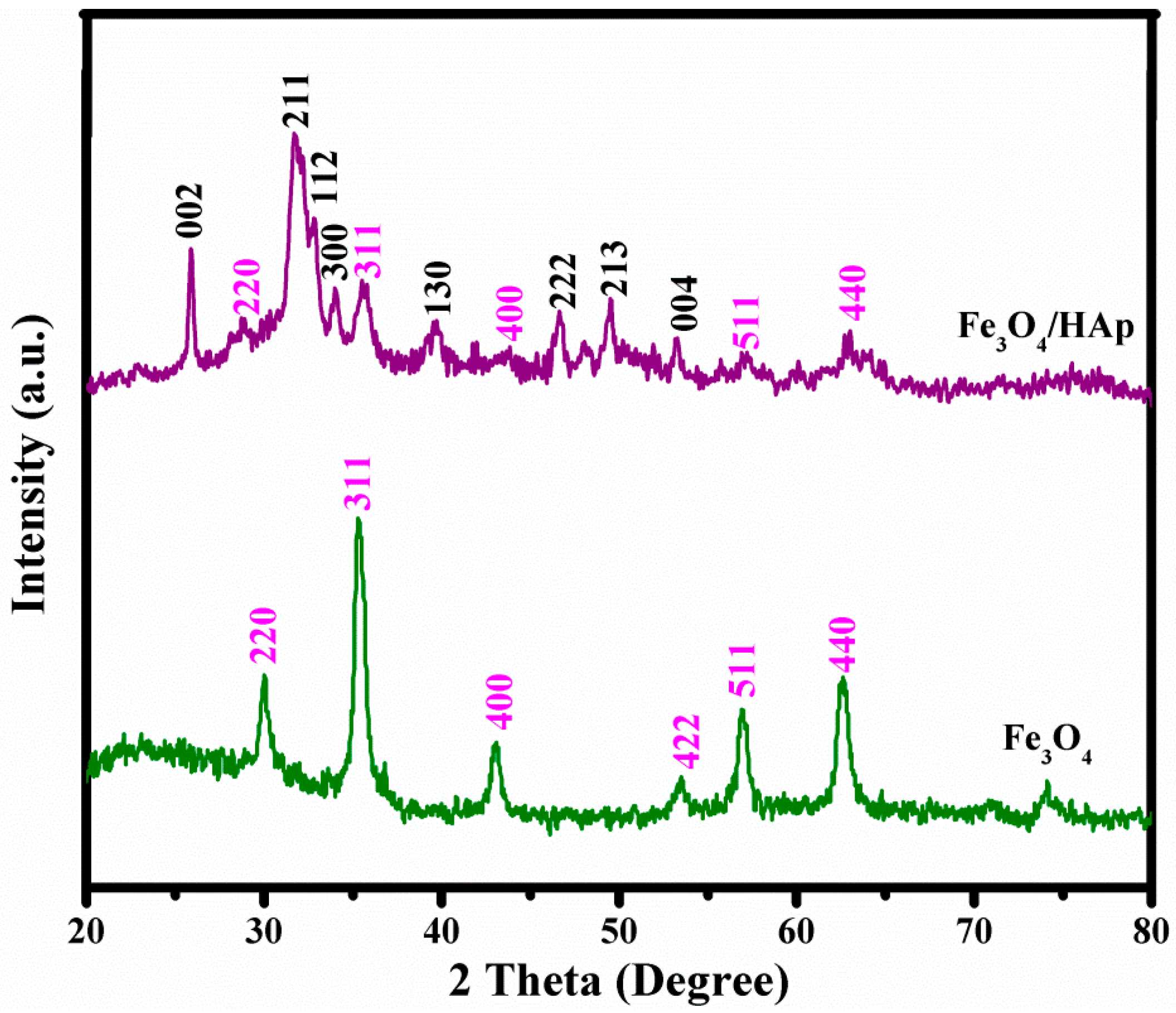
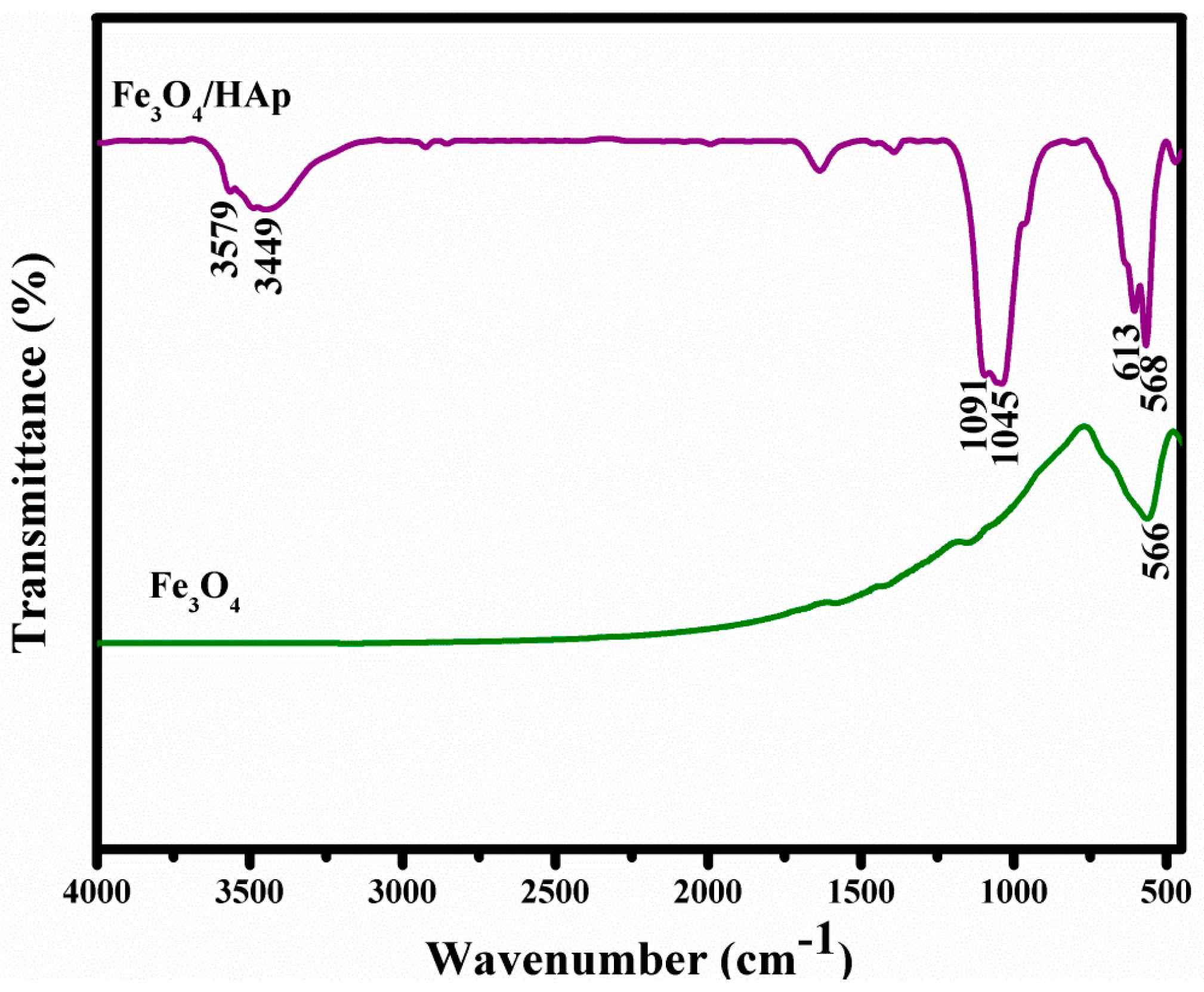
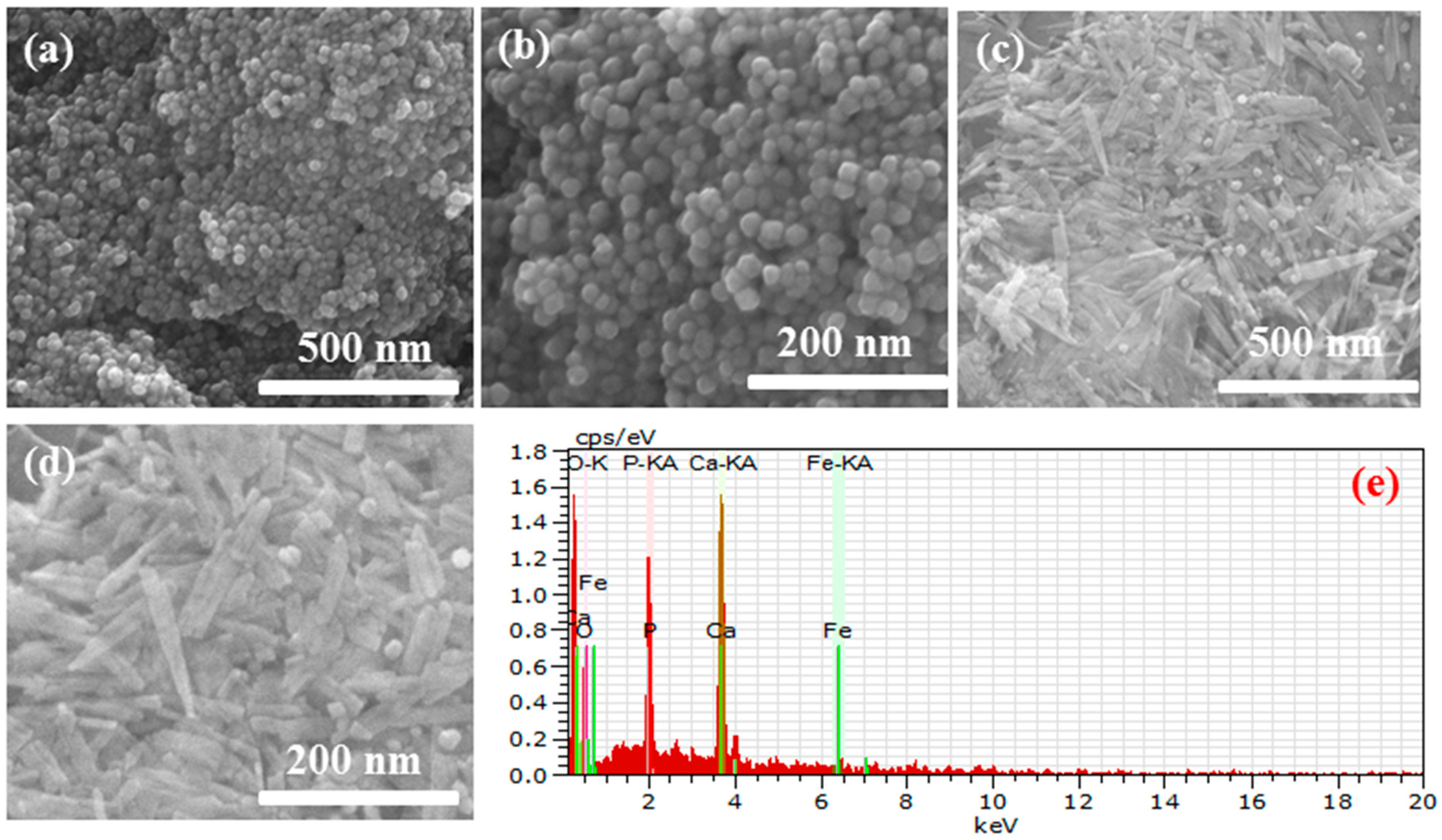
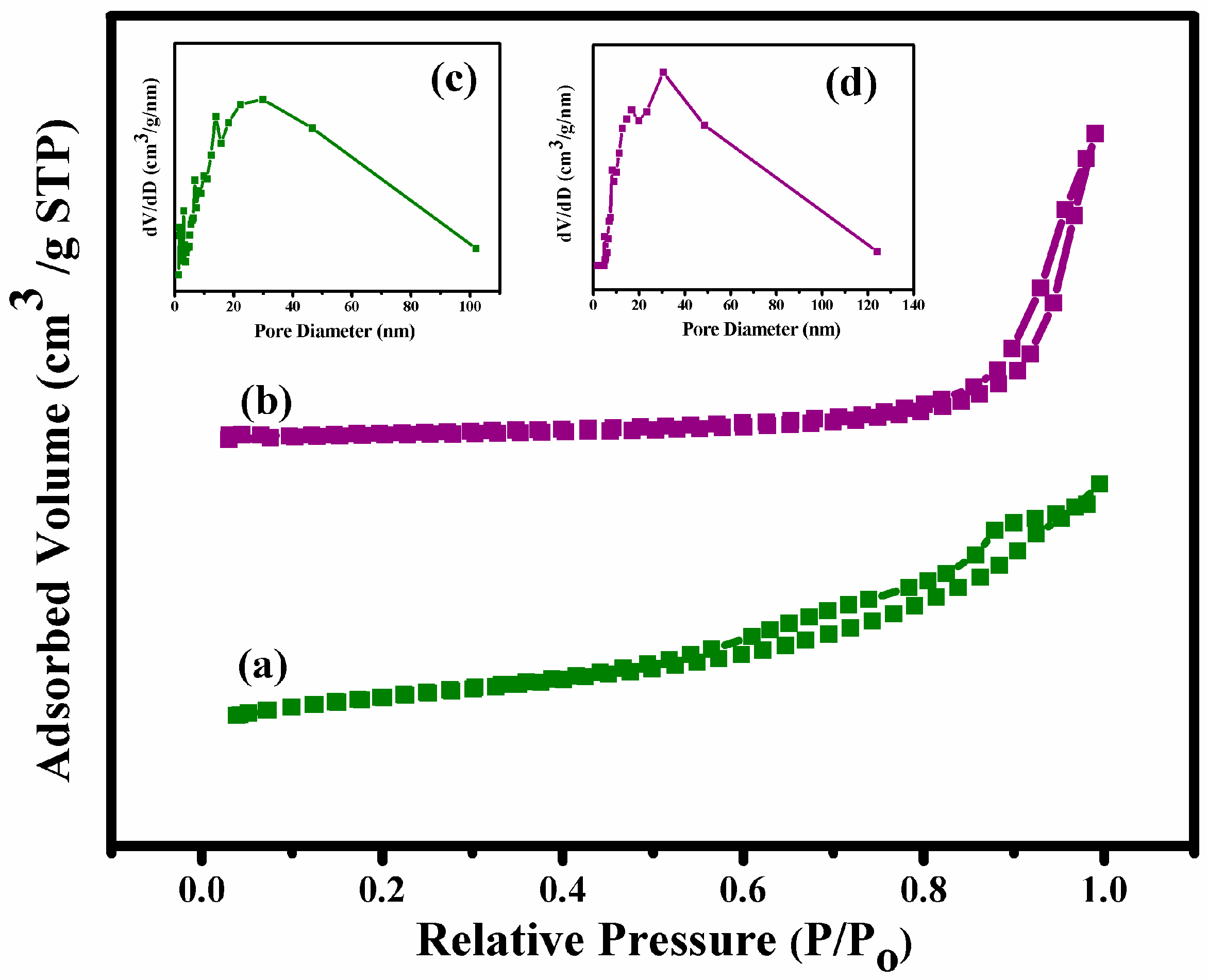
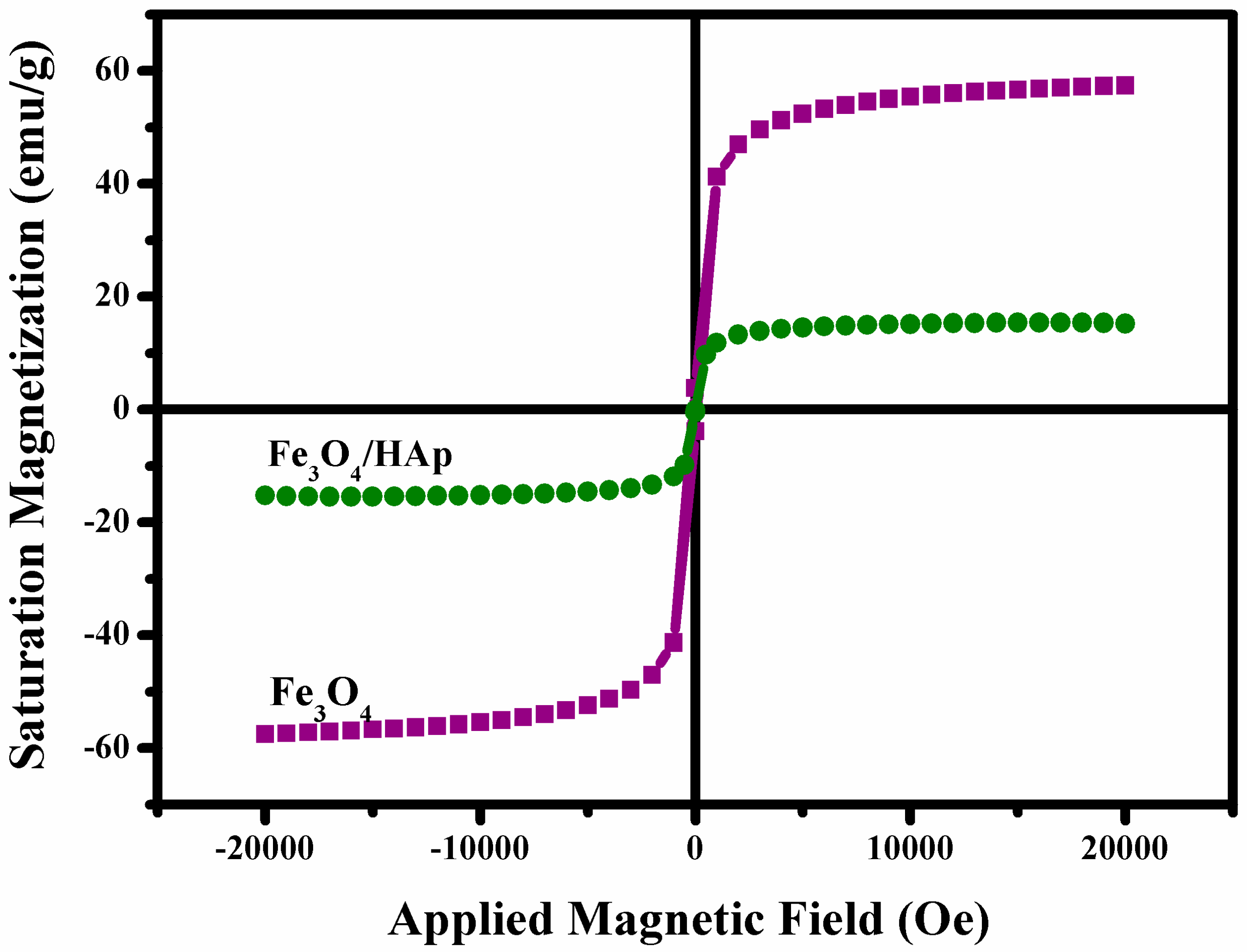
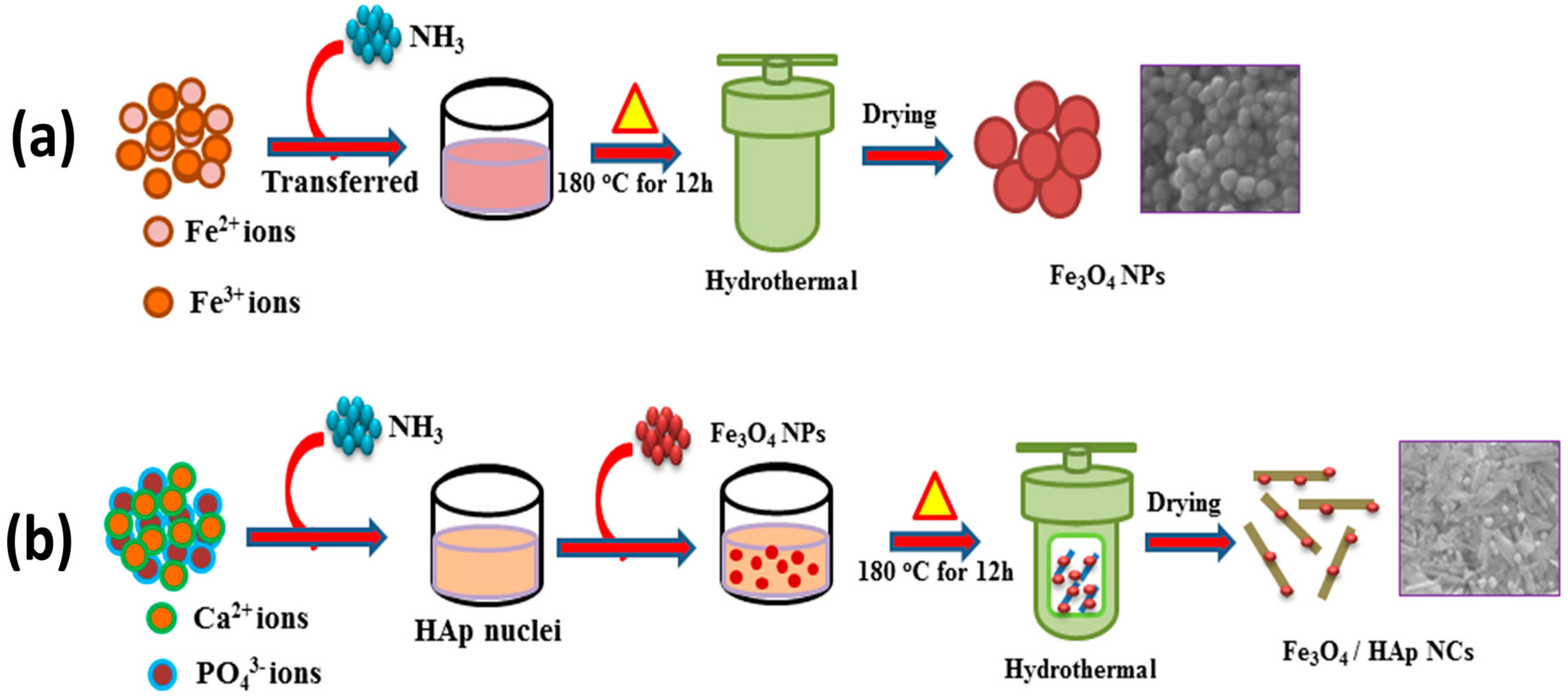
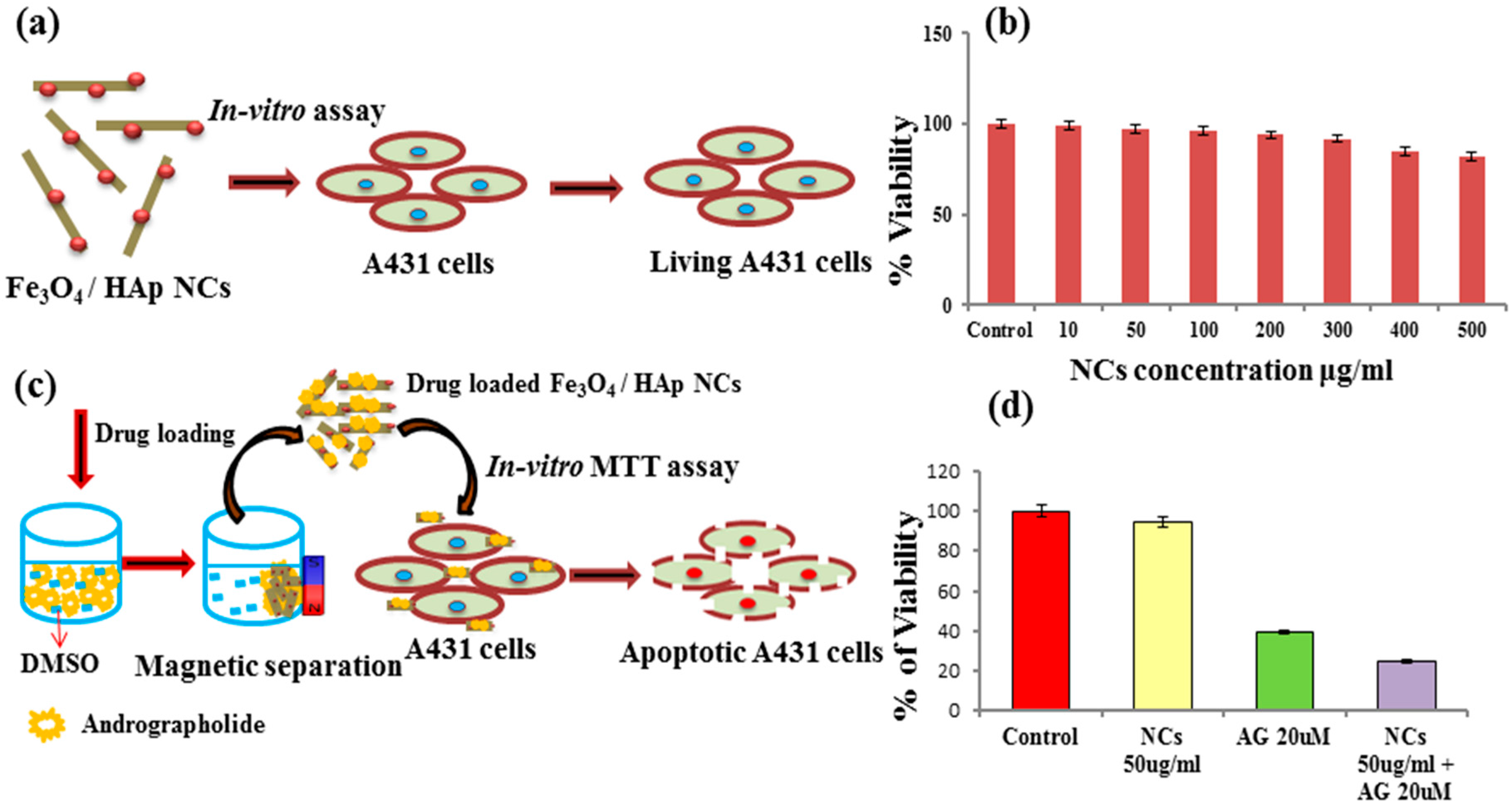

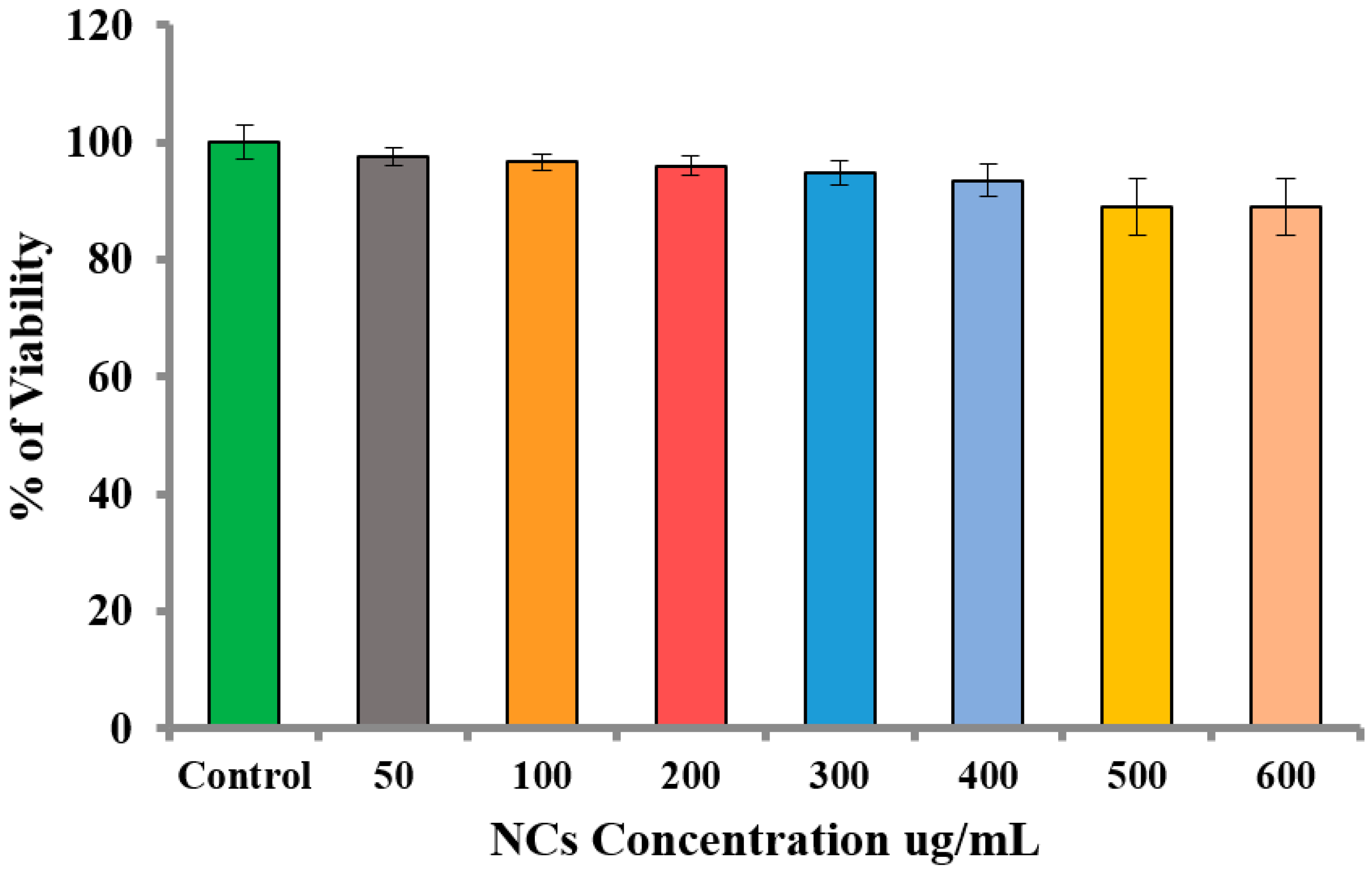
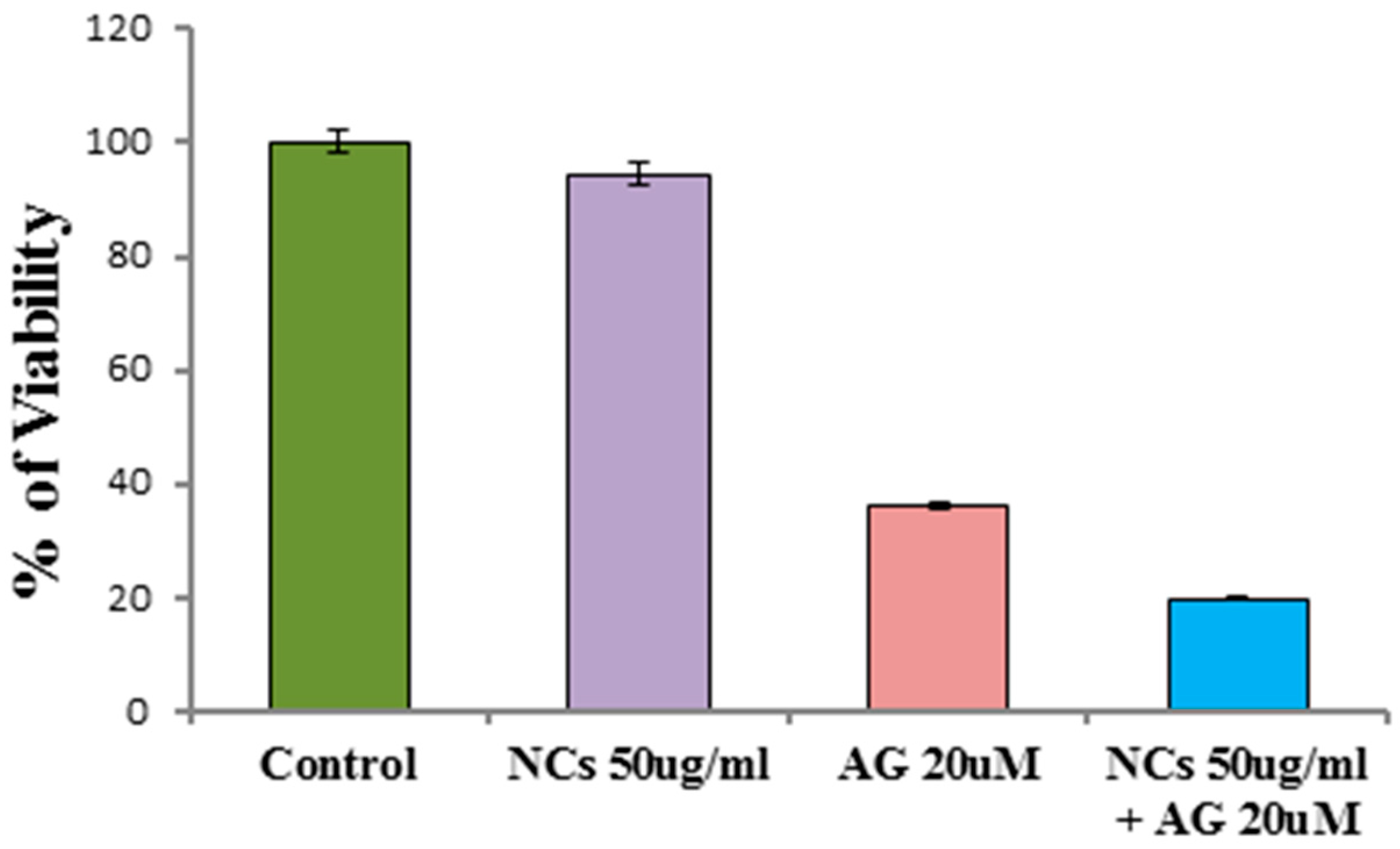
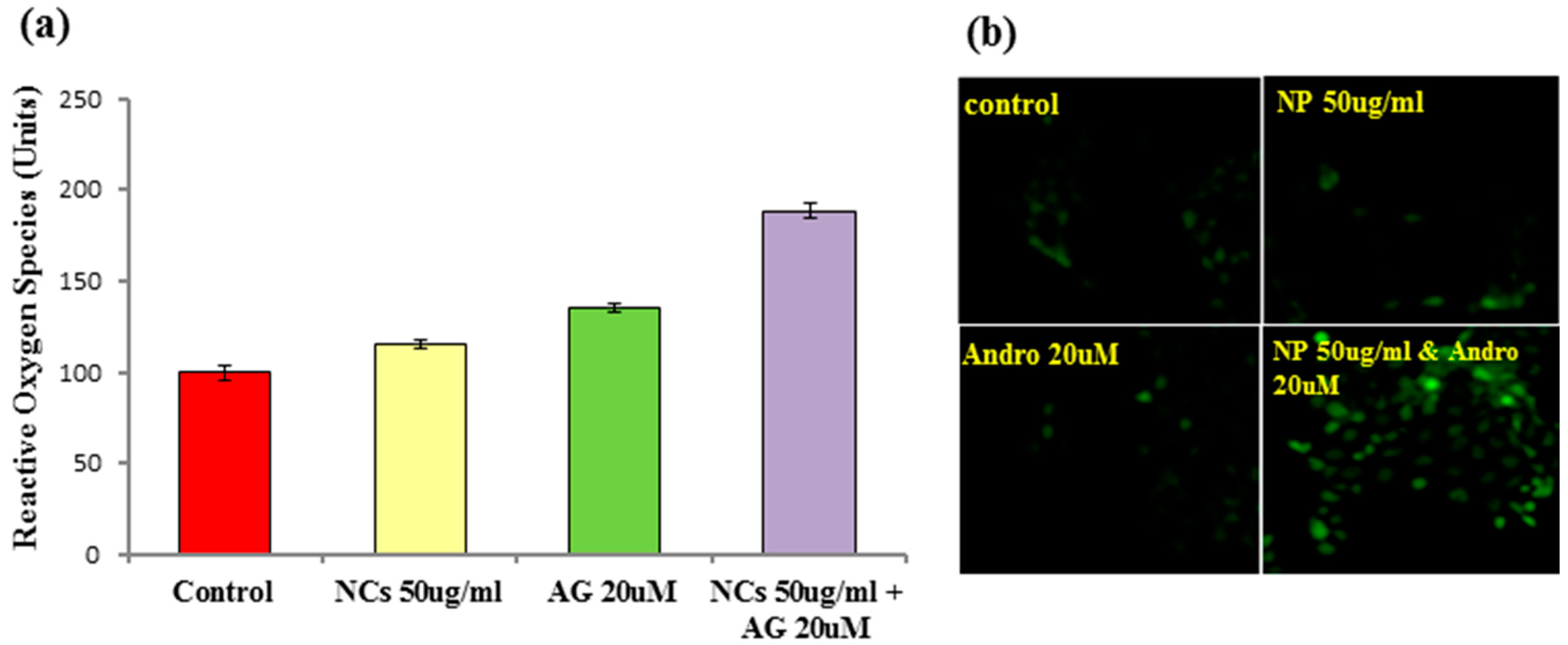
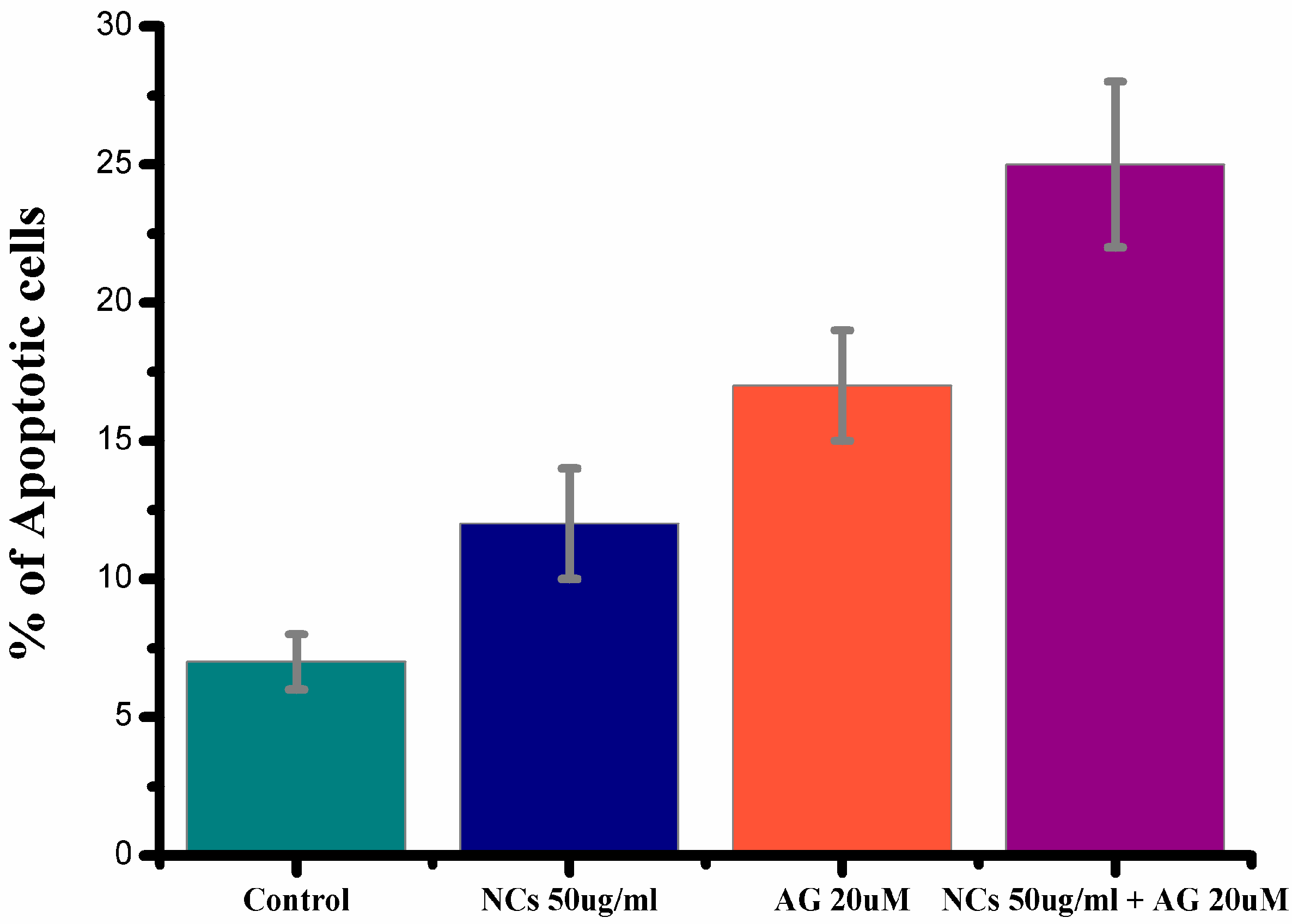
© 2017 by the authors. Licensee MDPI, Basel, Switzerland. This article is an open access article distributed under the terms and conditions of the Creative Commons Attribution (CC BY) license (http://creativecommons.org/licenses/by/4.0/).
Share and Cite
Govindan, B.; Swarna Latha, B.; Nagamony, P.; Ahmed, F.; Saifi, M.A.; Harrath, A.H.; Alwasel, S.; Mansour, L.; Alsharaeh, E.H. Designed Synthesis of Nanostructured Magnetic Hydroxyapatite Based Drug Nanocarrier for Anti-Cancer Drug Delivery toward the Treatment of Human Epidermoid Carcinoma. Nanomaterials 2017, 7, 138. https://doi.org/10.3390/nano7060138
Govindan B, Swarna Latha B, Nagamony P, Ahmed F, Saifi MA, Harrath AH, Alwasel S, Mansour L, Alsharaeh EH. Designed Synthesis of Nanostructured Magnetic Hydroxyapatite Based Drug Nanocarrier for Anti-Cancer Drug Delivery toward the Treatment of Human Epidermoid Carcinoma. Nanomaterials. 2017; 7(6):138. https://doi.org/10.3390/nano7060138
Chicago/Turabian StyleGovindan, Bharath, Beeseti Swarna Latha, Ponpandian Nagamony, Faheem Ahmed, Muheet Alam Saifi, Abdel Halim Harrath, Saleh Alwasel, Lamjed Mansour, and Edreese H. Alsharaeh. 2017. "Designed Synthesis of Nanostructured Magnetic Hydroxyapatite Based Drug Nanocarrier for Anti-Cancer Drug Delivery toward the Treatment of Human Epidermoid Carcinoma" Nanomaterials 7, no. 6: 138. https://doi.org/10.3390/nano7060138
APA StyleGovindan, B., Swarna Latha, B., Nagamony, P., Ahmed, F., Saifi, M. A., Harrath, A. H., Alwasel, S., Mansour, L., & Alsharaeh, E. H. (2017). Designed Synthesis of Nanostructured Magnetic Hydroxyapatite Based Drug Nanocarrier for Anti-Cancer Drug Delivery toward the Treatment of Human Epidermoid Carcinoma. Nanomaterials, 7(6), 138. https://doi.org/10.3390/nano7060138






